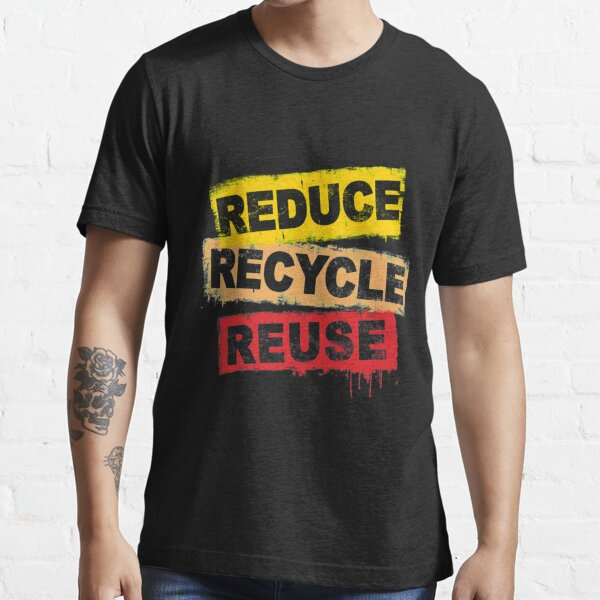When my grandkids recently asked me what the “T” in “T-shirt” stood for, I had no idea. It’s a question that never crossed my mind before, despite how common and essential this garment is in our daily lives. Like most people, I’d always worn T-shirts without much thought about their name or history. But after that curious question, I dove deep into the origins of the T-shirt—and what I found is a fascinating tale of simplicity, function, and cultural evolution.
In this article, we’ll uncover the surprising history of the T-shirt, from its beginnings as an undergarment to its rise as a symbol of self-expression and global fashion. So, what does the “T” in “T-shirt” really stand for? Let’s explore.

The Simple Answer: The Shape of the T-shirt
The “T” in “T-shirt” refers to its shape. Yes, it’s that simple. When laid flat, a T-shirt resembles the letter “T” with its straight body and short sleeves extending horizontally. This basic shape is the foundation of its name, which first came into use in the early 20th century.
The T-shirt’s design—just like the letter “T”—is clean and straightforward, offering comfort and functionality. But the T-shirt’s journey from practical workwear to a fashion icon is far more intricate than its shape alone.
The Humble Beginnings of the T-shirt
Before the T-shirt became a wardrobe staple, it was primarily used as an undergarment. Let’s rewind to the late 19th and early 20th centuries, when the modern T-shirt started to take form.
1. Origins in Workwear and Military Use
In the late 1800s, the T-shirt was an affordable and practical solution for laborers and workers who needed something simple and easy to clean. It was worn as an underlayer to absorb sweat during physically demanding jobs. However, its real breakthrough came during World War I and II, when soldiers began wearing them under their uniforms.
The lightweight cotton fabric made T-shirts perfect for soldiers in hot climates, and after the wars, veterans brought this practical garment back home. Soon, the T-shirt became synonymous with rugged durability and casual comfort.
From Undergarment to Outerwear: A Cultural Shift
The T-shirt’s status as a fashion staple began to shift after World War II, when soldiers returned home wearing them casually. But it wasn’t until the 1950s that the T-shirt truly made its mark on popular culture, thanks to Hollywood.
2. Hollywood’s Influence on T-shirt Popularity
Icons like Marlon Brando in A Streetcar Named Desire and James Dean in Rebel Without a Cause elevated the T-shirt from a mere undergarment to a symbol of rebellion and cool, effortless style. These film stars wore plain white T-shirts as outerwear, igniting a trend that caught fire with young people across the globe.
Suddenly, the T-shirt was no longer hidden under clothing—it became a statement of individuality and casual chic. This shift paved the way for the T-shirt to become the versatile, go-to garment we know today.
The T-shirt as a Canvas for Expression
What makes the T-shirt so universally loved? It’s not just its comfort or simplicity—it’s also its power as a blank canvas for personal and cultural expression.

3. The Rise of Printed T-shirts
In the 1960s and 70s, T-shirts took on a new role as a canvas for self-expression. People began printing graphics, slogans, and logos on them, turning the simple T-shirt into a vehicle for showcasing personal beliefs, music preferences, political stances, and pop culture references.
Bands, protest movements, and sports teams embraced printed T-shirts to spread their messages. Today, T-shirts allow wearers to express everything from their favorite movie quotes to their political ideologies. What started as a plain, functional garment has become a medium for creativity and personal identity.
The Global Impact of the T-shirt

It’s hard to imagine any other item of clothing having such a global reach. The T-shirt transcends gender, age, culture, and economic status, making it one of the most democratic pieces of clothing in history.
4. T-shirts as Fashion Statements
T-shirts are no longer just casual wear. Major fashion designers and brands have embraced them as high fashion staples, creating limited-edition T-shirts that cost hundreds, even thousands of dollars. The versatility of the T-shirt allows it to be dressed up or down, worn by everyone from rock stars to royalty.
From streetwear to luxury fashion, the T-shirt remains a crucial element of style—one that can be as simple or as bold as you want it to be.
The Future of the T-shirt: Sustainability and Innovation
As we move further into the 21st century, the T-shirt is evolving once again—this time in response to environmental concerns and advances in sustainable fashion.
5. Sustainable T-shirt Production
Many fashion brands are rethinking how T-shirts are made, focusing on eco-friendly materials and ethical labor practices. Organic cotton, recycled fibers, and biodegradable dyes are increasingly being used to produce T-shirts that have a lower environmental impact.
Moreover, T-shirts made from sustainable fabrics are becoming more popular as consumers demand clothing that aligns with their values. The T-shirt may be simple, but its role in promoting sustainability in fashion is powerful.
Conclusion: The T-shirt—More Than Just a Letter
So, what does the “T” in “T-shirt” stand for? Technically, it refers to the garment’s shape, but the story behind the T-shirt is so much more than just a letter. From its origins as an undergarment to its rise as a cultural icon, the T-shirt has cemented its place in history as a symbol of comfort, style, and self-expression.
Whether plain or printed, luxury or thrift-store, the T-shirt remains a staple in wardrobes worldwide. The next time you throw on a T-shirt, remember that you’re wearing a piece of history—one that’s simple in design but rich in cultural significance.


